Monilaria obconica, genus Monilaria obconica, native to South Africa. Very drought-tolerant, succulent, shad-loving plant. Because of its appearance looks like a small rabbit, soft soft cute, loved by flower friends.
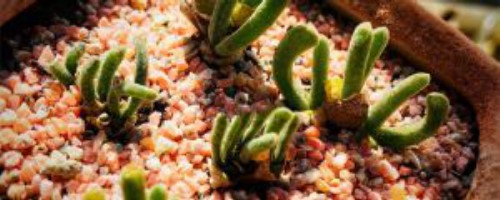
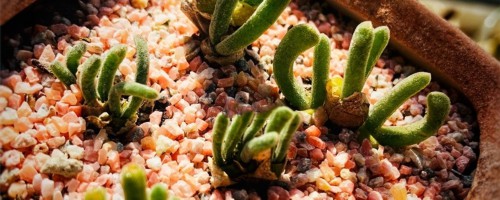
The maintenance of the newly purchased Monilaria obconica needs to pay attention to the following aspects:
1. Soil: Monilaria obconica needs soil with good drainage because of its well-developed root system. It is recommended to use sandy soil with good air permeability, and you can add some leaf soil, perlite, etc., to improve the soil's air permeability and water retention.
2, watering: Monilaria obconica has a good drought tolerance, the need for water is not large. At the beginning of planting, you can water moderately to keep the soil slightly moist, but do not overwater it so as not to cause root rot. In the flourishing period of growth, you can water every 5-7 days.
3, light: Monilaria obconica is a feminine plant, does not need strong sunlight. In spring and autumn, you can place it in a bright place but out of direct sunlight. When the summer sun is strong, it needs to be shaded or moved to semi-shade.
4, temperature: Monilaria obconica likes a warm environment, the growth temperature is 15-25℃. In the high temperature in summer, it is necessary to pay attention to cooling to avoid excessive temperature causing the plant to wither. In winter, the Monilaria obconica needs to be moved indoors and kept at a temperature of not less than 5 ° C to prevent freezing.
5, fertilization: In the flourishing period of growth, you can apply fertilizer to provide the necessary nutrients. It is recommended to use a special fertilizer for succulents and apply fertilizer every 2-3 months. Be careful not to over-fertilize the plant, so as not to cause overgrowth or rot.
6. Pest control: Regularly check the leaves and stems of Monilaria obconica, and take appropriate measures to prevent and control diseases and pests if found. It can be treated with special plant insecticides or fungicides.
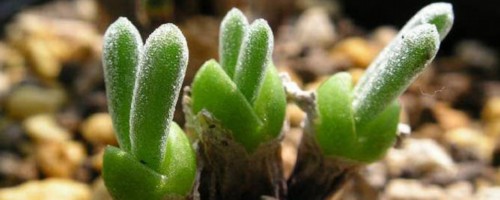
How Monilaria obconica breeds
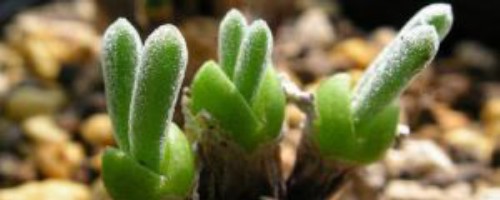
Sowing propagation:
Planting time: Monilaria obconica can be sown in autumn, usually around September. In addition, spring or winter can also be sown, but need to pay attention to control the temperature.
Prepare the soil: Choose a shallow basin, configure loose and breathable soil, you can add some peat soil or charcoal particles and other particulate matter to the soil to increase the soil permeability and water retention.
Seeding process: Wet the bottom of the basin with water to keep the soil moist. Spread the seeds of Monilaria obconica evenly over the surface of the basin soil, slightly denser to ensure germination coverage.
Cover and maintenance: After sowing, you can cover it with glass tiles, and you can open a small corner during the day to let the seeds receive some scattered light. Place the pot in a warm, moist place to expose the pot to plenty of sunlight, but when the temperature exceeds 30 degrees, it needs to be properly shaded.
Germination time: Generally three to half a month, Monilaria obconica will sprout.
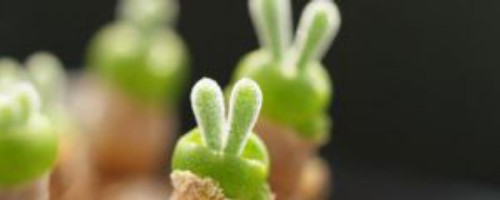
Cutting propagation:
Cutting the branches: Use a knife to cut off the fleshy leaves or branches of Monilaria obconica, which can be used as cuttings.
Prepare the soil: Prepare a loose and breathable soil, and add some perlite to the soil to ensure the soil is loose and breathable.
Cutting process: Insert the cuttings into the soil at a moderate depth, and then gently compact the soil so that it is in close contact with the cuttings.
Maintenance: Keep the cuttings of Monilaria obconica in a warm, moist, semi-cool place, away from direct sunlight. Keep the soil moist, but don't overwater it to avoid causing the cuttings to rot.
Rooting time: Generally one to two months, the cuttings will take root and start to grow.
Jade Rabbit ear
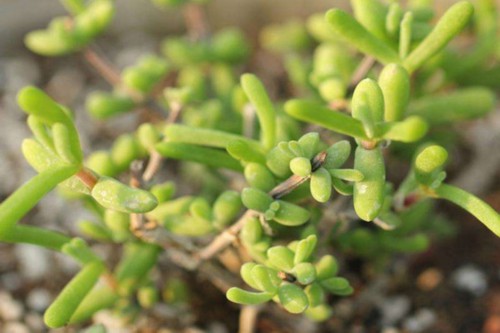
Monilaria obconica leaves are translucent and grainy, very lovely. And has branches, easy to live in groups.
The flowers are generally white, the fruits are ingot shaped, and the seeds are 50-150.
Stem thick, fleshy with joints. The leaves are fleshy, bimorphic, elongated and opposite, often unjoined, and the resting leaves are short and thick, hemispherical, and the opposite leaves are highly connected.
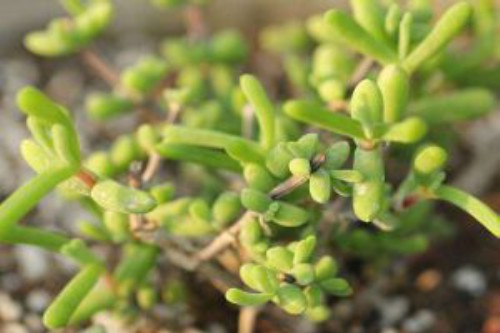
Native to South Africa, very drought tolerant pulpy plant. There is not much demand for sunshine, and we must shade, ventilate and cut off water in summer.
When the temperature is too high in summer, it will dry up, enter a dormancy state directly, and return to growth after watering in autumn.
Spring and autumn period can often water, can keep rabbit ears upright. Rabbit ears collapse when there is no water.
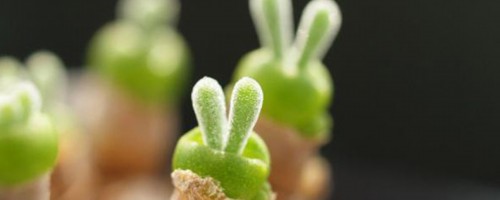
Thermophilic growth
The growth temperature of Monilaria obconica is generally 15-25 degrees, and it is not less than 5 degrees in winter.
Above 35 ° C the whole plant will wither and enter the dormant phase.
soil
Artificial cultivation can generally choose peat, vermiculite, perlite, and use a large amount of granular soil (favorable drainage, breathable), and a deeper basin with developed roots.
Water and fertilizer management
Watering: dry watering in the growing period, no water supply in the dormant period.
Fertilization: Thin fertilizer can be applied during the growth period, and fertilization should not be too frequent.
Mode of reproduction
Monilaria obconica is mainly propagated by sowing, but can also be propagated by separate plants.
Planting combination suggestion: Rainbow jade